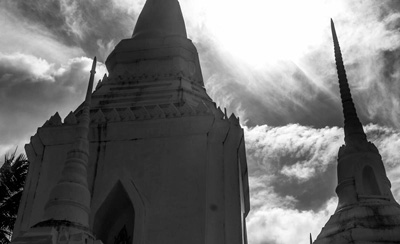Well the big news was in September 2018 when the Guardian Newspaper exposed the guru of Agama Yoga to be a sexual predator and to be overseeing a toxic culture. The headline read, ”Under Swami’s spell’: 14 tourists claim sexual assault by guru at Thai yoga retreat”. The swami in question is known as Swami Vivekandanda Saraswati is really the alias for a Romanian national, Narcis Tarcau.
People should have done their homework about first what tantric yoga is and the background of Mr. Tarcau. He was kicked out of India. His guru was another Romanian and another tantric practitioner who claimed he was on a spiritual journey to sleep with 1,000 virgins. This sexual predator went on the run and was briefly arrested in Paris in 2016. His bogus acolyte Narcis Tarcau also went on the run when the Koh Phangan police could no longer ignore the scandal. However, not for long. Coconuts.co reported he is back on the island looking to re-establish his profits and his position to abuse young women by rape and sodomy.
The roots of tantric philosophy stretch back hundreds of years in Hinduism and Buddhism. Agama claimed they were following a Shiva sect from Kashmir. Tantra is the left hand root, the sinister path. William Blake wrote ‘the road of excess leads to the palace of wisdom’. That is at the heart of tantra. Rather than turning away from the pleasures of the senses, the idea is to embrace sensuality and even sin. Naked sadhus in India haunt graveyards, eat meat, sleep with sex workers and drink alcohol. The notion is that they can understand the senses by sating them. You can overcome the sexual desire by learning to ejaculate inwardly.
This type of spiritualism is not for the masses. The West might have tried to de-mystify Hinduism by calling it yoga, but to dabble in Tantric practices is still dangerous.
It is noted that the Agama website is up and running again. They are trying to re-brand and hope enough news cycles will bury the scandal of their sexual predator guru. The money is too good, to let the whole thing drop.
They would be wise to stay clear of cultish trappings like uniforms, spiritual leaders and secret teachings. And instead get back to brightly coloured yoga pants, organic food, and most importantly doing something for the local community. Stop fucking students and start showing love to poor people.
Resources

